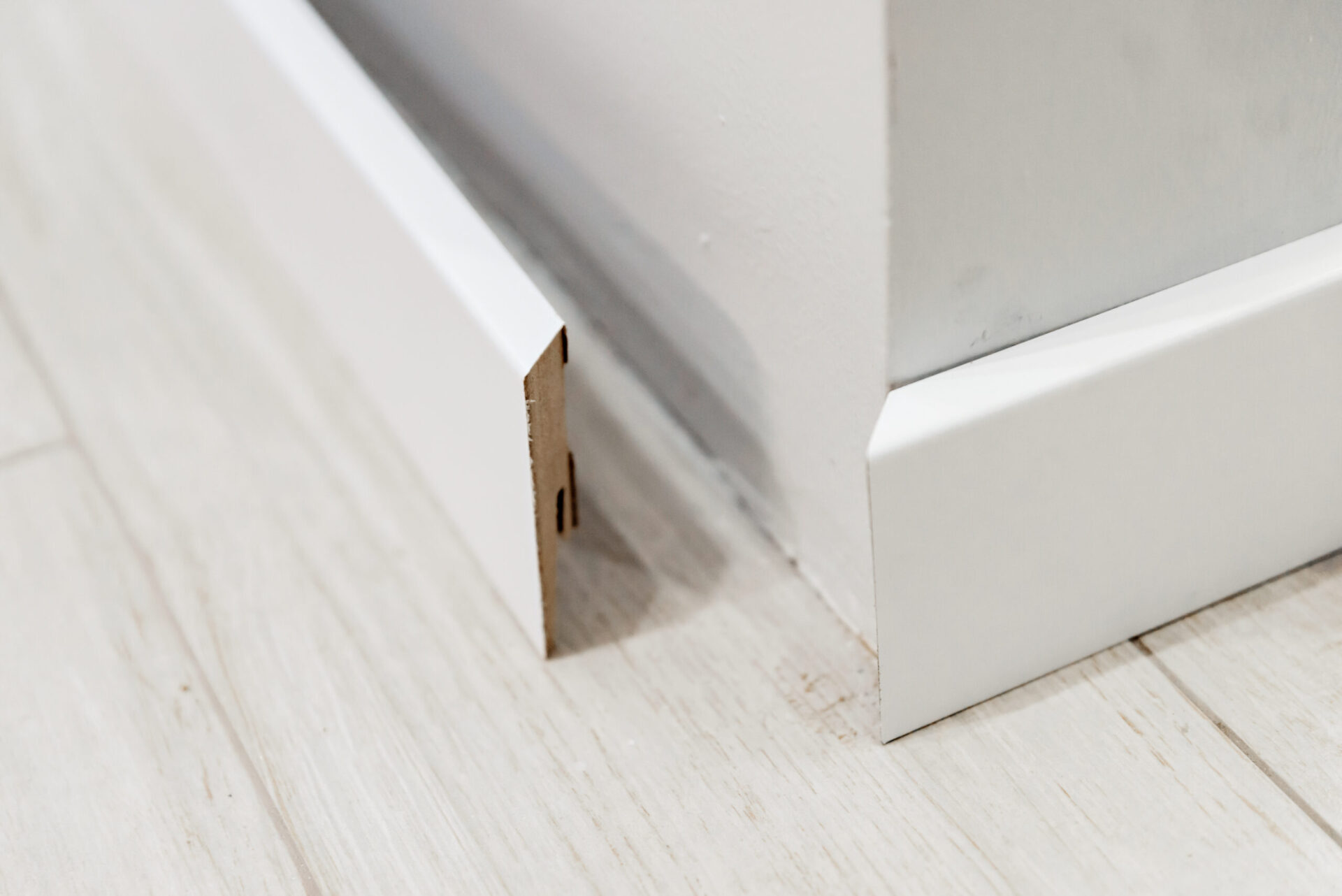Free Bay Area delivery on orders over $275. Orders will ship next business day. View Shipping/Return Policy.

If you’re like most homeowners in America, you’ve been spending more time at home in recent years. From quarantine mandates to an increase in learning and working from home, your house is much more than just the place where you live. It’s no wonder that home improvement projects have skyrocketed lately. In just the first quarter of 2021, Americans spent $353 billion on home projects and repairs. And this trend isn’t going to slow down anytime soon!
Adding flat base moulding is one project that can make a home look put together and polished. Everyone loves a good trim job for their home, but there are so many trim types out there that it can take time to know which is right for your project. In this guide, we’ll take a closer look at flat base moulding—also called flat board trim—to help you decide if it’s the right choice for you!
What Is Interior Trim and Moulding?
Interior trim and moulding are terms used to describe the woodwork used to finish the inside of a home. Trim is generally thinner than moulding and is used to cover gaps between the walls and ceiling or floor. It can also be used to accent features or border windows and doors. Moulding is thicker and often has more ornate designs. Both trim and moulding can be made from various baseboard wood species, including Finger Jointed Pine, Medium Density Fiberboard (MDF), Maple, Cherry, Poplar, and more.
What Is a Flat Base Trim?
Flat base trim is a moulding used to create decorative elements or accents in a home. It is made from a flat piece of wood milled into a specific shape. There are various moulding profiles to choose from—from the very ornate to the very plain. Flat board trim tends to be a bit more basic and can be used for various purposes, such as crown moulding, wainscoting, or baseboards. It is a versatile type of trim used in traditional and modern homes.
How to Use Flat Base Trim
You can use flat base trim in many ways to add character to your home. Here are some of the most popular ways to use this decorative trim:
Crown moulding
Crown moulding is a type of trim installed at the point where the wall meets the ceiling. It can be made using a wide selection of moulding and trim styles from various wood species. Crown moulding is suitable for covering gaps, concealing wires, and adding decorative elements to a room.
Wainscoting
Wainscoting is a type of paneling that covers the lower portion of walls. This type of wall trim is popular in dining rooms. It is usually made from wood or composites and comes in various styles, including beadboard, shiplap, and tongue-and-groove. Wainscoting can protect walls from damage, add architectural interest, or create a cozy feeling in a room.
Baseboards
Baseboards are trim boards installed along the bottom of walls. Flat baseboards help with covering gaps, protecting walls from damage, and adding a finishing touch to a room. Baseboards come in various styles, including flat board, beadboard, and bullnose.
How to Install Flat Board Trim
Flat base trim can be installed using various methods, depending on the type of trim and the project. The most common installation method is nailing for crown moulding, wainscoting, chair rail, and baseboards. Nailing is a straightforward method that DIYers can do. Another standard installation method is adhesive for smaller projects, such as baseboards. The adhesive is a quick and easy method that doesn’t require nails or screws.
You may also consider hiring a contractor to do the work for you. These companies are skilled at selecting and securing your wood moulding, so you don’t have to worry. We frequently work with contractors, so if you need a recommendation, please get in touch with us or visit one of our stores!
What’s the Difference Between Flat Base Trim and Other Types of Moulding?
Flat base trim is a versatile type of moulding used for various purposes, including crown moulding, wainscoting, and baseboards. It is made from a flat piece of wood milled into a specific shape. The main difference between flat board trim and other types of moulding is the thickness as flat board trim is thinner.
Flat stock moulding is also different from other types of moulding in that it is made from a flat piece of wood instead of being milled from a solid piece of wood. This makes it more affordable than other types of wood trim. In addition, flat stock moulding is easier to work with because it doesn’t require special equipment or skills to mill it. However, because it is made from a flat piece of wood, it isn’t as strong or durable as other types of wood trim.
Ready to Transform Your Home with Flat Base Trim?
Flat stock moulding is a versatile type of trim used for various applications, including wainscoting, door and window casings, cabinet making, and furniture making. It is more affordable than other types of wood trim and easier to work with because it doesn’t require special equipment or skills to mill it. However, because it is made from a flat piece of wood, it isn’t as strong or durable as other types of wood trim.
If you think flat base moulding is the correct type of trim for your project, shop now! You can also view our catalog for more information about trim moulding. We are happy to help you out and answer any product questions you have. Achieving the aesthetic look that YOU want is our goal. Check it out at any of our locations near you.

